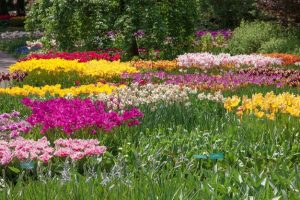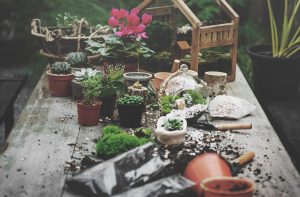
Unveiling the Beauty of Enchanting Garden Flowers
A garden is a canvas where nature’s artistry comes alive. The presence of enchanting flowers can add a touch of magic to your outdoor space, transforming it into a haven of color, fragrance, and beauty. Whether you’re an experienced gardener or just starting, these captivating blooms are sure to cast their spell on you.
Planning Your Enchanted Garden: Factors to Consider
Before you begin, take a moment to plan your garden’s design, layout, and color scheme. Consider the sunlight, soil type, and climate of your region to ensure the success of your enchanting flower garden. Remember, thoughtful planning sets the stage for a truly mesmerizing display.

The 15 Most Enchanting Flowers for a Magical Garden
- Roses (Rosa spp.): Symbolizing love and beauty, roses offer a timeless charm with their diverse colors and intoxicating fragrance.
- Lavender (Lavandula spp.): This aromatic herb not only delights the senses but also attracts pollinators, creating a serene and scented oasis.
- Peonies (Paeonia spp.): With their large, fluffy blooms, peonies evoke a sense of romance and elegance in any garden.
- Tulips (Tulipa spp.): These vibrant blooms herald the arrival of spring, bringing an array of colors that dance in the breeze.
- Lily of the Valley (Convallaria majalis): Delicate and fragrant, these bell-shaped flowers create an enchanting carpet under trees or in shaded areas.
- Clematis (Clematis spp.): Climbing and trailing, clematis adds a vertical dimension to your garden with its stunning and diverse flowers.
- Morning Glory (Ipomoea spp.): These cheerful, trumpet-shaped flowers unfurl in the morning sun, adding a splash of color to fences and trellises.
- Hibiscus (Hibiscus spp.): Exotic and striking, hibiscus flowers invite tropical allure and attract hummingbirds with their nectar.
- Foxglove (Digitalis purpurea): Tall spires of bell-shaped blooms bring an air of woodland enchantment and attract beneficial insects.
- Snapdragons (Antirrhinum majus): These whimsical flowers resemble dragon mouths, and their vibrant colors brighten any garden bed.
- Delphiniums (Delphinium spp.): Towering spikes of blue, purple, or white flowers create a regal atmosphere in cottage-style gardens.
- Cosmos (Cosmos spp.): Graceful and daisy-like, cosmos flowers sway in the wind, bringing movement and charm to your garden.
- Bleeding Heart (Dicentra spp.): The heart-shaped flowers of bleeding heart plants evoke a sense of romance and nostalgia.
- Anemones (Anemone spp.): Delicate and captivating, anemones offer a burst of color and elegance, especially in spring.
- Sweet Peas (Lathyrus odoratus): These fragrant climbers add a touch of nostalgia and sweetness to fences and trellises.
Nurturing Nature’s Spell: Caring for Your Enchanting Garden
To maintain the magic of your garden, regular care and attention are essential. Watering, fertilizing, pruning, and pest control ensure that your enchanting flowers continue to thrive and enchant. Embrace the journey of nurturing your garden and watch as it rewards you with a captivating display that brings joy and wonder to your life.












